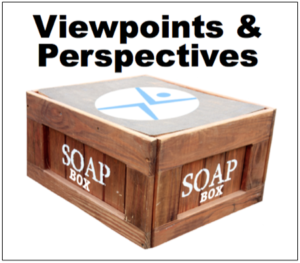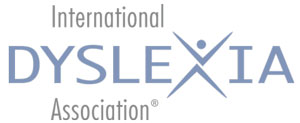By Carolyn D. Cowen
March 2016
I have dyslexia. There. I said it.
I never have been ashamed of having dyslexia, though it played a role in scenarios where I did feel shame, especially as a schoolgirl. On the contrary, I tend to feel that dyslexia contributed to wonderful experiences and  outcomes in my life. (I am lucky.)
outcomes in my life. (I am lucky.)
Even so, I do not usually share the fact that I have dyslexia in public forums and I do not usually lead with this personal card when addressing topics related to dyslexia (which I’ve had reason to address in various professional capacities over the years). When my story can help someone or is relevant, yes, of course I share it without hesitation. But generally, the settings are more private and the context is more interpersonal than this—an article in the International Dyslexia Association’s Examiner.
I understand and endorse important efforts like the #SayDyslexia campaign, but it runs against my grain to step into the spotlight with my own dyslexia. I do not withhold this information, but I do not tend to lead with it either.
Until now.
Why Go Public Now?
On March 3, an item was published on the Internet that compelled me to step forward. You may have seen it, a post claiming to simulate what it is like to read with dyslexia. I admit that I am not a fan of dyslexia simulations. At best, they seem overly simplistic. At worst, they distort. But the technical ingenuity of this recent dyslexia simulation coupled with the dynamism of the Internet makes this one compelling, powerful, and deeply troubling.
…the technical ingenuity of this recent dyslexia simulation coupled with the dynamism of the Internet makes this one compelling, powerful, and deeply troubling.
The post uses the text of Wikipedia’s definition of dyslexia (not one of the better ones). Its algorithm scrambles all but initial and final letters 20 times a second in randomly selected words. I hate sending any more traffic to this simulation; however, understanding exactly what it does is difficult to grasp without seeing it. Here is the URL: http://geon.github.io/programming/2016/03/03/dsxyliea
This simulation was shared across the Internet on sites ranging from WIRED to CNN. I counted over 15 sites re-posting the simulation on one day. I probably missed some. I am sure that it has been re-posted innumerable times since and has been shared across social media channels countless more times. This so-called dyslexia simulation is reverberating throughout the Internet under headlines such as the following:
- “What the Internet looks like for someone with dyslexia”
- “Learn what it’s like to have dyslexia by visiting this website”
- “This is what reading is like if you have dyslexia”
- “Online post shows what it’s like to be dyslexic”
- “This website simulates what it’s really like to have dyslexia”
And so on. The most responsible headline I saw said, “Web code hints at what it’s like to read with dyslexia.”
What’s Wrong with the Dyslexia Simulation?
You might ask, what’s the problem? Doesn’t all this at least help raise awareness of dyslexia?
Here is where I am prepared to play my personal dyslexia card. By the way, my dyslexia bona fides are solid—the doctor who diagnosed me in first grade worked with Dr. Samuel T. Orton (of Orton-Gillingham fame and in whose memory the International Dyslexia Association, originally The Orton Society, was established).
As a person with dyslexia, as someone with dyslexia running throughout generations of both branches of my family, and, finally, as an educator who has taught countless children and adults with dyslexia over the decades, I feel pretty confident saying that this simulation is NOTHING like what it is like for most people who have dyslexia.
The simulation is a devilishly clever coding trick and well intentioned, but contrary to the dramatic headlines, it does little to deepen anyone’s understanding about what having dyslexia is really like. Sure, trying to read the altered Wikipedia text is challenging. And, sure, learning to read can be challenging for someone with dyslexia. Both are tough. But the two are as different as a 100-yard run and a marathon. It would be absurd to say that someone who has run 100 yards knows what it is like to run a marathon. Claiming that the simulation imparts insight into what it is like to have dyslexia is equally absurd.
Dyslexia is much more than experiencing frustration while struggling to read text. And this simulation offers about as much insight into the dyslexic experience as skipping a meal offers a well-nourished person insight into the experience of starvation.
…this simulation offers about as much insight into the dyslexic experience as skipping a meal offers a well-nourished person insight into the experience of starvation.
The simulation’s greatest sin, though, is that it misleads.
That is not its intent, of course. But the result is the same. Conveying well meaning but wrong-headed ideas about dyslexia (e.g., implying that people who have it literally see letters “jumping around” rapid fire) does not help raise awareness about dyslexia. It undercuts that goal and undermines the science-based efforts of professionals and organizations working on behalf of those with this condition. The downstream effect thwarts families and educators seeking solutions and hurts those with dyslexia.
Even with the tepid cautions and disclaimers and additional definitions of dyslexia that some sites included, it is almost impossible to avoid taking this very powerful simulation literally. Its most salient and indelible aspect is a visual one. What is the impression? What is remembered? Answer: That people with dyslexia see letters “jumping around” or swapping wildly. The appeal and prevalence of this reasonable but misguided conclusion is seen in the comments on the many sites re-posting the simulation.
Coupled with the overreaching headlines and the erroneous accompanying information on many of these sites, the simulation’s likely take-away for the casual viewer with little or no knowledge of dyslexia is that this problem primarily is in the visual domain. From there, it is a short hop to assume that the solutions lie in the same domain.
For those who have dedicated decades to conveying and disseminating accurate information about the emerging body of science about reading, dyslexia, and effective interventions and practices, this simulation is discouraging. Like so many other misleading and mistaken ideas about dyslexia and its causes, this simulation helps foster and validate misguided notions about solutions.
And those notions can lure families into time- and resource-wasting wild-goose chases pursuing costly, ineffective interventions.
Wasting resources is bad enough. Wasting time pursuing bogus treatments is worse. Why? Evidence-based interventions and practices are all the more effective when the brain is most plastic (i.e., young). Wasting time during these critical years can have life-long consequences.
There Is No Single Dyslexia Experience
To be fair, I need to insert a caveat here.
It is important to underscore that there is no single “dyslexia experience.” While most people with dyslexia share a cluster of symptoms and experiences, the saying that if you’ve met one person with dyslexia, you’ve met one person with dyslexia also is true. We do not emphasize this enough. Indeed, people with dyslexia are as likely as those without it to assume it is a unitary condition and often overgeneralize their own experiences to everyone else with dyslexia.
Dyslexia, like other neurodevelopmental conditions—such as, attention deficit hyperactivity disorder (ADHD) and autism spectrum disorder (ASD)—is less a distinct syndrome with clear diagnostic biomarkers and obvious demarcations and is more a developmental multidimensional-spectrum condition. The various hallmark characteristics of dyslexia fall along continuums of severity that vary from individual to individual. Indeed, perhaps it is more accurate to take a page from ASD and begin thinking in terms of the dyslexia spectrum.
So even with all my windows into the dyslexia experience, I acknowledge that the complexity and variability of the human brain leaves open the possibility that a few people who struggle with dyslexia (not some other visual difficulty) might experience the sensation of letters “jumping around.”
However, I think it is more likely that these and similar statements by people with dyslexia reflect instead the inherent difficulty in explaining the experience to people without dyslexia. With no shared frame of reference, it is as difficult to explain as it is to grasp—like trying to explain the difference between red and green to someone with red-green color blindness.
So vague analogies are recruited, and we get fuzzy descriptions like “the letters seem to jump around.”
Disseminating Accurate Information Remains A Priority
Even if some people with dyslexia actually do see letters literally jumping around, they would be a very small minority of the total population with dyslexia. We have a robust body of science that not only applies to this larger population, but also points to solutions that actually can diminish dyslexia’s challenging symptoms and can improve life trajectories.
Helping to disseminate this information is a mission all those concerned with dyslexia share and must pursue vigorously. We must work together to counter the effects of well intentioned but misguided efforts like this simulation. For example, we need to be proactive in asserting that, as stated in a policy paper by the American Academy of Pediatrics,
“ … vision problems are not the cause of primary dyslexia or learning disabilities. Scientific evidence does not support the efficacy of eye exercises, behavioral vision therapy, or special tinted filters or lenses for improving the long-term educational performance in these complex pediatric neurocognitive conditions. Diagnostic and treatment approaches that lack scientific evidence of efficacy, including eye exercises, behavioral vision therapy, or special tinted filters or lenses, are not endorsed and should not be recommended.”
The full text of this important paper can be found at the following URL: http://pediatrics.aappublications.org/content/124/2/837. It also is important to help disseminate widely the following key resources:
- The 2002 working definition of dyslexia—jointly developed by the International Dyslexia Association (IDA) and the National Institute of Child Health and Human Development of the National Institute of Health (NICHD-NIH)
- IDA’s Fact Sheets (many in Spanish!), which provide a wealth of easily understood information about all aspects of dyslexia
- Information about effective instructional practices and interventions (AKA Structured Literacy) and what teachers need to know and be able to do to teach students with dyslexia.
Among the many wonderful organizations working on behalf of those with learning and attention challenges, there is a treasure trove of well-vetted information about dyslexia. As evidenced by this recent dyslexia simulation, we still have much work to do to get this information into the hands of the average person. Given dyslexia’s prevalence (up to 15-20% of the population as a whole show some symptoms of dyslexia), raising public awareness about where to find accurate information remains an important priority.
A colleague who also has dyslexia said some 20 years ago, “I’m tired of raising awareness. I’m ready to raise some hell.” Tired we may be, perhaps even more so all these years later. But our ability to shake things up and create positive change on behalf of those with dyslexia still rests on the bedrock of accurate, science-based, actionable, information.
…our ability to shake things up and create positive change on behalf of those with dyslexia still rests on the bedrock of accurate, science-based, actionable, information.
Let’s Step It Up
Now that I have stepped outside my comfort zone to disclose my dyslexia so publicly, here is what I ask in exchange from you.
First, over the course of the next week or so, select five people who would benefit from accurate information about dyslexia—be they students, parents, educators, legislators, media professionals, or anyone else who might profit from knowing more about dyslexia. Make it a point to reach out and engage with these five people and share information.
In the links above, you have a range of material (even an infographic) appropriate for all kinds of audiences at different levels of understanding. There are more facts on IDA’s website. You also may have other information and resources from other sources to share—just make sure that what you share is well vetted and evidence-based and that it targets the needs of the person you have selected. (It would be neat to see some of our independent schools for students with dyslexia adopt this “reach-five campaign.” Imagine the reach of a whole class or school! If your school does this, be sure to let the Examiner know—maybe we will do a follow-up article.)
Second, consider adding a comment on a website that is posting the simulation. Normally, I would have suggested the site of the initial posting, but for some reason it has attracted an inordinate number of comments with vulgar language. CNN’s site does not seem to have comments, so you might try WIRED (here).
Or, if you are on social media, consider posting comments on one or two of your accounts with appropriate links. (If you are on Twitter, tag me @cdcowen. I’d love to see and re-tweet your posts.)
Third, take our survey. Let’s see what our community thinks of the dyslexia simulation. You have my reaction, but maybe I am wrong? Perhaps we can gather some useful data to deepen understanding. The survey is a quick one. It asks on a scale of 1-5 how closely you think the simulation captures the dyslexia experience. The survey is anonymous and only asks (a) if you have dyslexia, (b) if you are a close relative of someone with dyslexia, and (c) if you are a professional working on behalf of those with dyslexia.
I realize that I am preaching to the choir with this post. But in this case, the choir is exactly the audience I want to reach.
Dyslexia is complex. It is difficult to understand and even harder to address. Over the last several decades, we have made remarkable progress in the science of reading and dyslexia, in codifying the elements of evidence-based practice and intervention, and in mobilizing legislation efforts. We even have begun to wrestle with implementation science. But we need to step it up even more to create the change we seek—as evidenced by the “whac-a-mole” dyslexia myths propagating across the Internet faster than weeds in a spring lawn.
The mission to bring effective reading instruction to every child in every classroom across the nation not only improves the life trajectories of our children with dyslexia, but also benefits all our children. The adage, “a rising tide lifts all boats,” applies. Our mission and our efforts are vital.
The choir must step it up. We all need to step outside our comfort zones. We, too, must become compelling, powerful, and even willing to stir up a little trouble to alter the status quo. We must preach passionately, engagingly, and authoritatively. We must work strategically, wisely, and collaboratively to share accurate information—the indispensable foundation for creating the change we seek on behalf of all children.
Carolyn D. Cowen, Ed.M., is the Social Media Editor/Strategist for the International Dyslexia Association’s Examiner. She also serves on the Board of Trustees for the Newgrange School, Ann Robinowitz Education Center, and Laurel School and on the Board of Directors for the Research Institute for Learning and Development. Carolyn is especially interested in creative ways nonprofits and movements can “power the mission with the message.” Follow her on Twitter @cdcowen.
Copyright © 2016 International Dyslexia Association (IDA).
We encourage sharing of Examiner articles. If portions are cited, please make appropriate reference. Articles may not be reprinted for the purpose of resale. Permission to republish this article is available from communications@interdys.org

